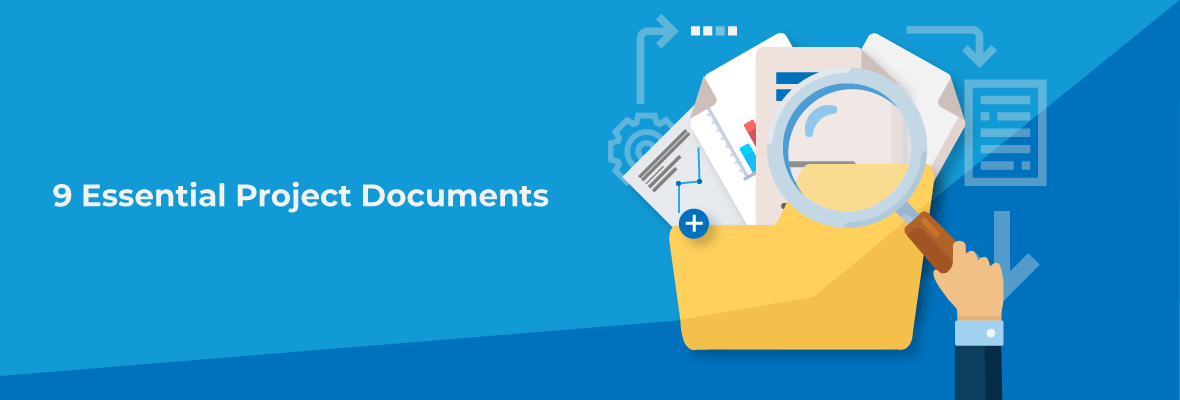The ultimate guide to 9 essential documents for your project
You must have heard a lot about project documents needed through just about every phase of every project. Definitely, there is a lot of crucial paperwork that needs to be accomplished to ensure a project of premium quality.
Take a break and think about it, which project is most likely to succeed in your view? One with a lot of project papers OR the one that has a few?
Well, there is no fixed answer to that!
At every phase of challenge, initiation, planning, execution, and closure, there may be a need for a lot of crucial paperwork or few to ensure a successful project of premium quality.
Every project is unique with different levels of complexity, purpose, deliverables, the cycle of life, size, etc. Hence the differences in the project documents.
Is there a list of must-have documents? And whose decision is it?
However, careful project planning and execution rest on having a talented project manager and the right techniques and tools. Therefore the project manager is in the best position to make such a decision.
.jpg)
I have compiled a comprehensive list of documents, the role they play, and why each one is necessary for managing project activities and providing essential deliverables. They have played crucial roles in ensuring the achievements of my past projects.
Even in easy projects, there are too many details that the human brain may not be able to capture, remember, and manage all the details accurately. So, at this point, let us agree that documentation supports excellent project execution and reduces the risk.
Accurately documented projects are an expansion of stakeholders' ideas, and it is vital for future references. It serves as a road map to re-visiting the plans, actions, goals, and purpose of the project.
These documents enable sponsors, teams, and stakeholders the ability to precisely get the required information without having to wait for the project manager.
These documents save a lot of time and effort by making needed information accessible by the project manager, team, and stakeholders. It also helps in enhancing the level of concentration. Therefore helps to complete the various tasks on time.
Proper documentation is the foundation for all work to follow which takes care of the scope, time, cost and quality constraints.
It is critical that the scope of the document is correct, and should be socialized with all parties involved, to ensure an understanding of the deliverables of the project. And yes, give them access!!
Below is a list of 9 essential project documents.
1. Project Business Case
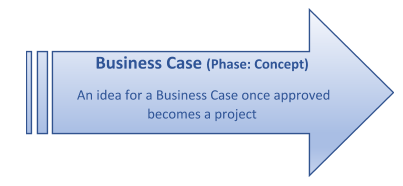
Every project requires an investment in terms of money, time, and effort.
This business case is at the core of any project and must answer if the project is worth implementing. The purpose of a business case is to identify, highlight, and weigh the costs of undertaking a project against the expected benefits.
In simple terms, it identifies and highlights the reasons for investing in a project.
2. Project Charter
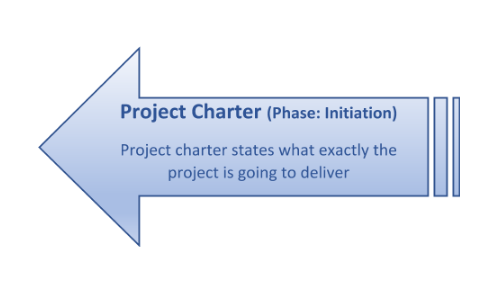
There is no project without the project charter. It is the most critical project deliverable.
The project charter identifies the need for the project, formally provides authorization for a project and grants authority to the project manager to request resources and conduct project activities.
The purpose of the project charter is to document the following explicitly:
- Project Objectives
- Constraints of the project
- Internal & External Stakeholders
- In-scope activities
- Out-of-scope activities
- Assumptions
- Benefits of the project’s outcomes
- Positive & Negative Risks
- High-level budget and spending authority
For a large multi-phased project, it is advisable to have the project charter for each phase. This will be created at the kickoff process of a project/phase by the initiating process group.
The two main actions of the initiating process group are to develop the charter and identify the stakeholders.
3. Project Management plan
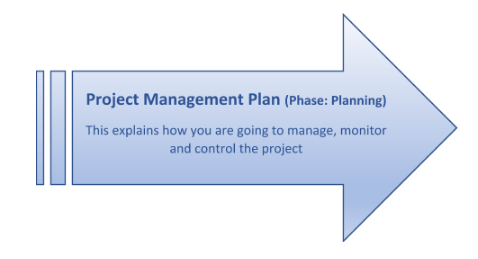
Planning is the primary phase of project management and it should not be neglected. A good project management plan holds the key to any project's success. A project plan is a document that presents the processes and procedures of planning. This document guides the project's progress through completion.
A project management plan is a formal document that is most commonly represented in the form of a Gantt chart to make it easy to communicate with stakeholders.
The project plan serves as the foundation for the project team, and it shows the cost, schedule baselines, and step-by-step process for project completion.
Based on the project requirements, it may include any of the following:
- Communication Management Plan
- Human Resources Management Plan
- Procurement Plan
- Stakeholder Management Plan
- Risk Management Plan
4. RACI Matrix

For any project to run smoothly, the delegation of responsibilities is crucial. You need to have team members assigned to every task making sure each of them knows what to do. This is where the RACI Matrix comes in to play.
RACI Matrix is the Responsibility Assignment Model. RACI is pronounced "RACEY," and it's an acronym for:
R-Responsible
A-Accountable
C-Consulted
I-Informed – indicating the four roles assigned to team members.
Irrespective of the project size, roles, and responsibilities, it should be clearly defined and ensured that someone takes care of every step of the process. This tool helps you to clarify who is Responsible, who is Accountable, who is Consulted, and who should be Informed. The Matrix helps reduce confusion, distributes workload and increases efficiency.
Applying the RACI model can serve as a check on what should be done and who ought to be doing what during the project execution.
Let us have a quick look at how each component of the RACI matrix functions.
Responsible:
"Responsible" refers to "the doer." This is the person with the responsibility of getting the work done. There always has to be at least one responsible person for each task. Never the less, it's okay to assign more than one person for the "R," depending on the workload.
Accountable:
As the term suggests, "Accountable" is the person who is ultimately answerable for the activity or decision to be made. This person generally delegates the work and would review it on completion.
This is the main person accountable for the correct and thorough completion of the task according to requirements.
Typically, you should have only one member of the team accountable for every task.
Consult:
This is the adviser for the given task or entire project.
The person assigned to consult will generally be a subject matter expert or have domain expertise. Usually, this is the subject matter expert whose opinion you seek before making the final decision or action.
Consultation and review help achieve better deliverables. However, many C's can slow down the process significantly, add unnecessary deliberation and idle discussion, hence raising the risk of poor performance.
So it is advisable to keep the number of consultants to the minimum.
Informed:
"Informed" are the people you keep updated on how the process is going. Team members need to keep him in the loop of the project deliverables and tasks.
These are the people that are affected by the outcome of the tasks, so they need to be kept up-to-date.
The "informed" could be Project Manager or some other stakeholder who needs to be aware of the progress of the task or deliverable.
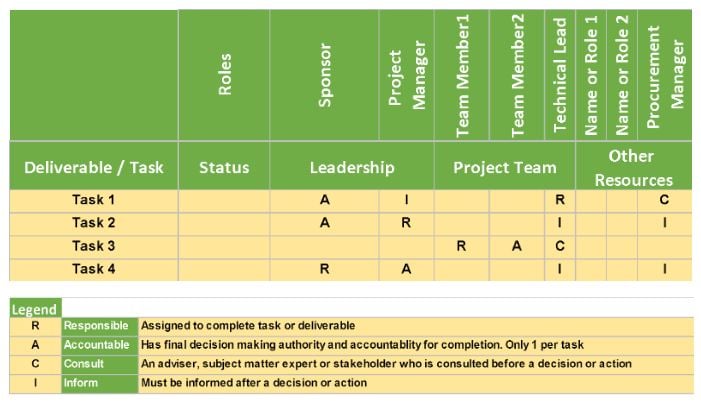
When do I use a RACI Matrix?
Projects require many people's involvement, but a common problem in any size of the project is that team members have a wrong perception of their roles and the roles of others.
RACI Matrix usually fits in almost all projects.
It is especially useful when your tasks need multiple resources, have a complicated schedule and need to ensure people know their level of responsibility; when they should involve their project manager, or when they should exercise their intuition?
5. Work Breakdown Structure (WBS)

A work breakdown structure is the core of project planning. It is essential for resource management and avoiding project scope creep by defining all the things a project needs to accomplish, organized into multiple levels and displayed graphically.
The work breakdown structure organizes the team's work into manageable sections.
A project can be broken into smaller components. These components can be further broken down into sub-components, such that each level of the work breakdown structure provides further detail.
This means work can be done simultaneously by different team members, leading to better team productivity and easier project management overall.
The breakdown structure helps to form the framework for cost, effort estimation, and schedule development.
The following guidelines should be considered when creating a WBS:
-Involve the team, so that you get their Buy-In
-Understand that each level of WBS is a sub-level (a smaller piece) of the level above
-Go one level at a time
-The entire project is summarized by looking at all the levels of a WBS
-WBS does not include anything that is out of the project's scope
Note*
A deliverable is considered a work package if, it can be estimated reasonably, confidently and can be completed without interruption.

6. RAID Log (Risk, Actions, Issues, Decisions)

Every project has its issues. Issues being problems that arise during the execution of the project. On the other hand, Risks are problems that haven't occurred.
Once the plan is in place and you've detailed all the risks likely to occur over the life cycle of the project, the next step has a system in place to monitor and track the risks that might happen.
This can be achieved by using what's called a RAID log.
A RAID log is a project management tool that tracks risks, actions, issues, and decisions. It is a good practice to follow the logging format to monitor and track the risks that might happen over the life cycle of the project. By identifying what risks are probable, you can prepare for them and have a response in place if and when they occur in your project.
RAID is an acronym that stands for:
R-Risks
A-Actions
I-Issues
D-Decisions
Risks: Risks are the potential problems lurking in your project.
Actions: Actions are what you need to do throughout the project.
Issues: Issues being problems that arise during the execution of the project. If not managed and resolved, it can derail the project or cause the project to fail.
Decisions: Decisions are how you decide to act in the project.
Having all these logged and tracked in one log helps proactively ensure everyone is aware and in sync. Will prevent any critical or inter-dependent issues getting skipped.

7. Change Request Management

Projects will always have some changes.
A change request is often inevitable and should be expected at some point in the process of project execution. Change can be an alteration in scope, time, cost or deliverables. Change management is challenging, but the best way to handle it is by managing it rather than avoiding it. There is a need to ensure that the change is sufficiently tracked and detailed.
Change Request needs to be understood by all stakeholders. And the entire team should be aware of both positive and negative of the change request impact so that it can be dealt with in an appropriate and timely manner.
8. Project Schedule

A project is made up of many tasks, and every task is given a start and end (or due date), so it can be completed on time. Therefore, all work associated with a project needs to be scheduled. The project schedule is the tool that communicates what work needs to be performed and the timeframes in which that work needs to be completed.
Effective project scheduling is a critical component of successful time management as it ensures that tasks on critical path should not be delayed. There are tools available to do this. Microsoft project can also be used for complex scheduling needs.
9. Lessons Learned & Project Closure document

Project Management Institute (PMI) Project Management Body of Knowledge (PMBOK) defines lessons learned as the learning gained from the process of performing the project.
Project Closure is the last phase of the project life cycle. In this phase, you will formally close your project or a stage of the project and then report its overall level of success to stakeholders.
During the project closure, everything should be detailed to measure if the project went as planned and if the outcome is done as required.
Senior management uses Project Closure Documents for the evaluation of project success. The report defines best practices for future applications.
Quick Summary:
Based on your project, select the documents that your project needs. Recall that it's only a guide. Use the necessary project paperwork to handle your project best.
Do you need a detailed stakeholder management plan? Then make one! If there is no external procurement, then you don't need to create one. Leave it blank!
Don't get hung up on what you need to have. Use the above as a guide for what most projects require. Spend less admin time.
Time spent creating documents that don't add value does not help. This will help you free up more time to lead your team. It's more important that you do the work on the project.
Stick with these nine documents; you'll be able to control your project without too much bureaucracy.
Enroll now to become an efficient Project Management Professional
